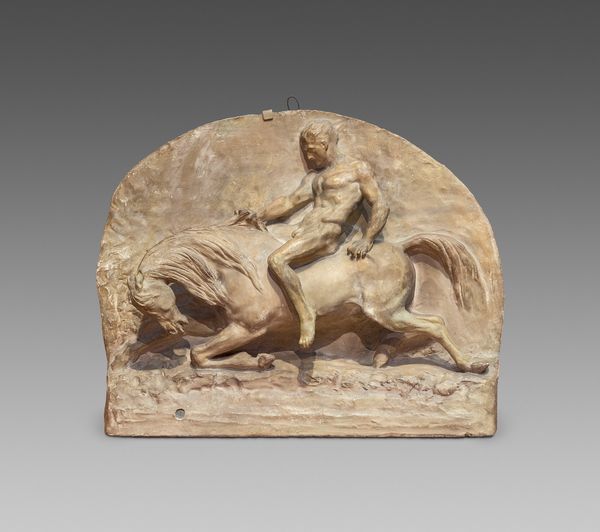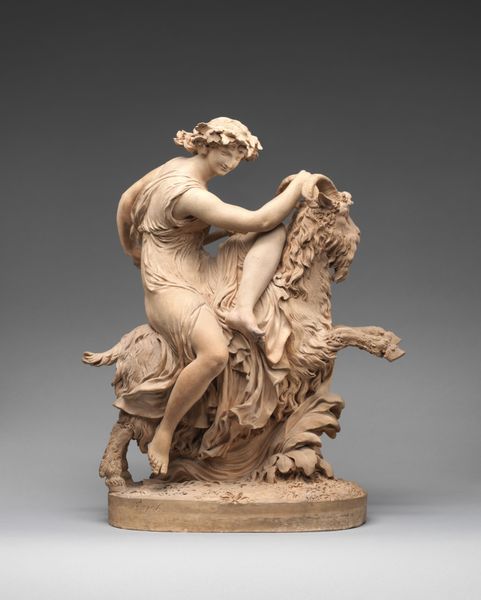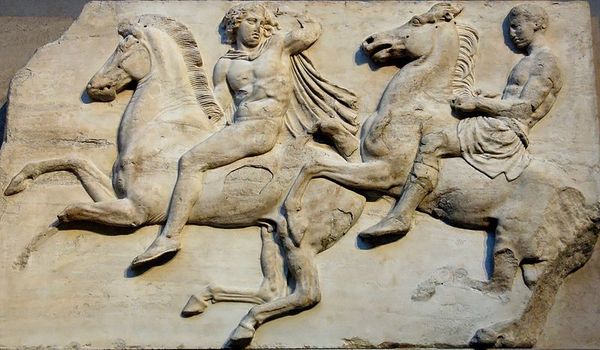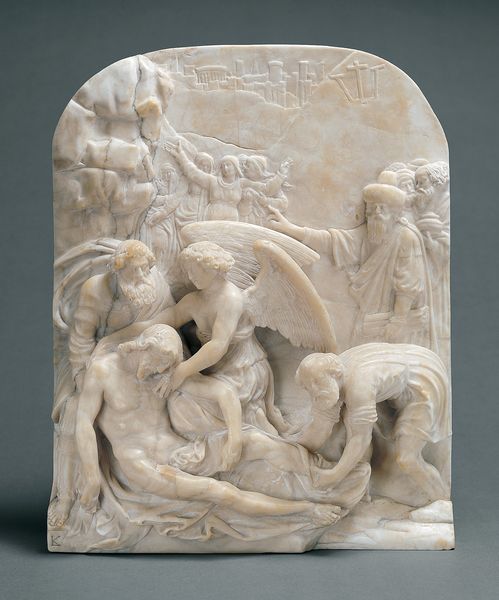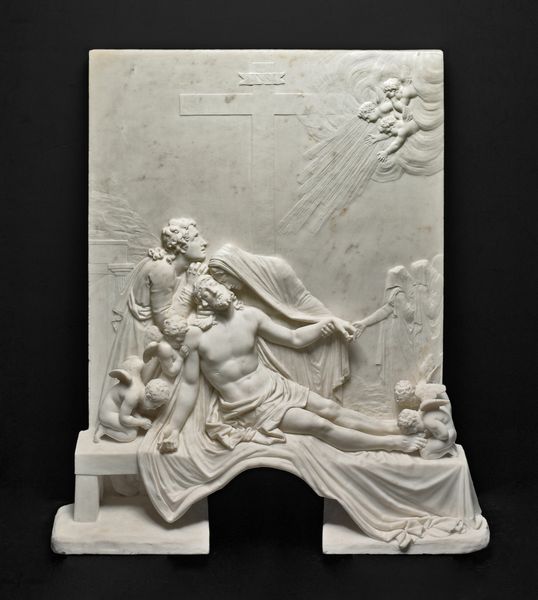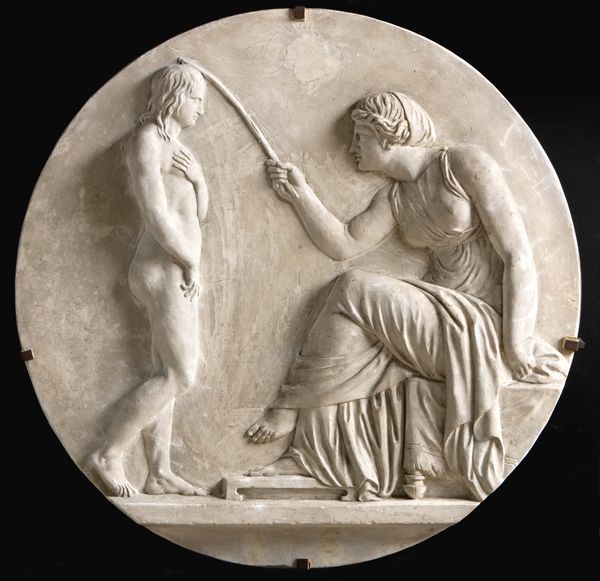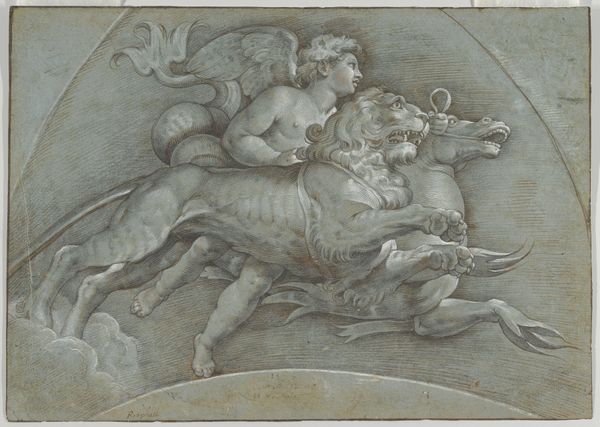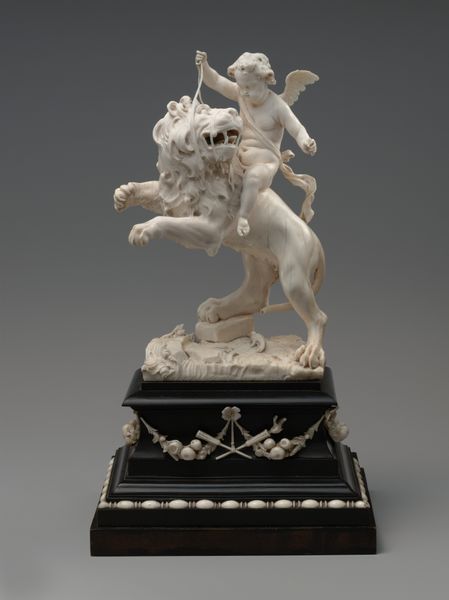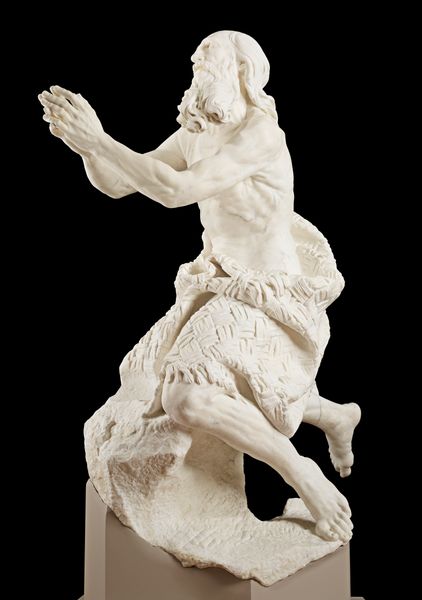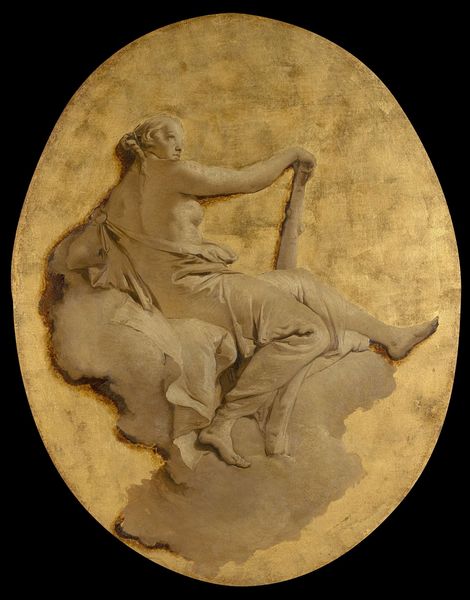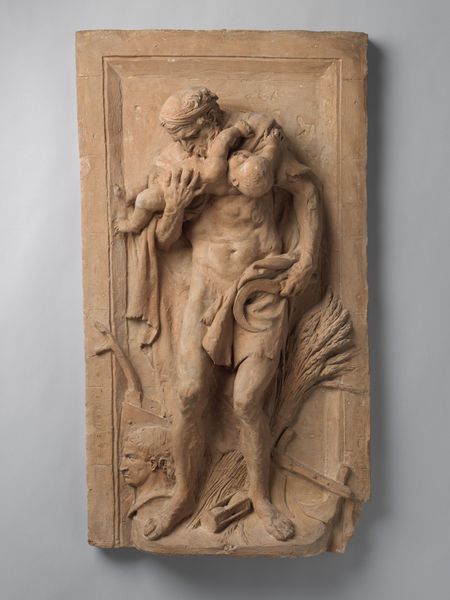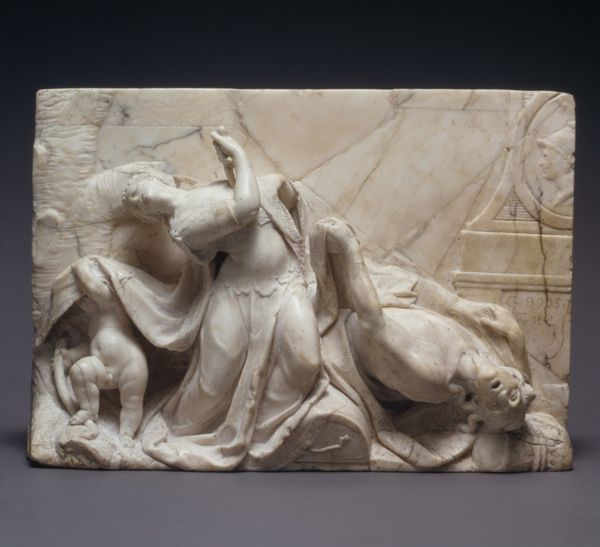
relief, sculpture, marble
#
neoclacissism
#
narrative-art
#
sculpture
#
greek-and-roman-art
#
relief
#
figuration
#
sculpture
#
marble
Dimensions: confirmed: 39 1/2 × 49 1/2 × 5 3/4 in., 414 lb. (100.3 × 125.7 × 14.6 cm, 187.8 kg) historic dimensions, superceded: 47 1/4 × 49 3/16 in. (120 × 125 cm)
Copyright: Public Domain
Curator: Immediately striking, isn’t it? The sheer muscularity carved in high relief from this slab of luminous marble—I can almost feel the desperation rippling beneath my fingertips. Editor: Desperation, you say? To me, it feels rather…staged. Like a meticulously choreographed ballet. There’s an undeniable elegance amidst the chaos, don't you think? It's very white. Curator: Absolutely! Now, for some context, what you are experiencing is Bertel Thorvaldsen's *Nessus Abducting Dejanira*, created between 1814 and 1826. Here, he illustrates a famous scene from Greek mythology. Editor: The drama! Of course! A centaur, half-man, half-horse, carrying away a… reluctant maiden? Tell me more! Though, I admit, my first thought was less about the narrative and more about the process, that such an active scene came entirely from white marble. Curator: The interesting thing to consider is the industrial transformation around the marble trade at this time, along with discussions about cultural purity and value of the ancient materials in newly created sculptures and the reuse of marbles. Thorvaldsen expertly employs the contrast between smooth flesh and textured musculature to emphasize the figures' struggle, which only deepens the overall sense of movement. You are very attuned to these details! The marble from Carrara, the transportation of such, along with discussions regarding purity and cleanliness... the final sculpture asks some fundamental questions, especially in the realm of access to natural resources at the turn of the nineteenth century! Editor: True! And how each cut had to matter; that marble is heavy. This piece feels very deliberate. Despite the inherent drama of the abduction, I keep returning to the almost serene expression on Dejanira’s face. Perhaps it's because she's accepting of her abduction! There are elements of resignation. Does it diminish the sense of violation inherent in the scene? The sculptor managed to imbue stillness with a sort of tragic acceptance of the events as if she is asking "is this it?". Curator: I interpret her expression differently. The arch of her body, the extended arm—to me, those read as desperate appeals to onlookers, almost gestures of frantic escape! What I take away from this dynamic artwork is about gender and access to ancient material, refigured under Neoclassical artistic traditions. Editor: Fair enough. Different eyes, right? Regardless, that is indeed why art matters, doesn't it? Curator: Indeed, art's greatest strength lies in its enduring ambiguity and multifaceted access, sparking contemplation about both the past and the present.
Comments
No comments
Be the first to comment and join the conversation on the ultimate creative platform.
